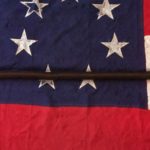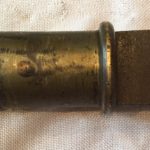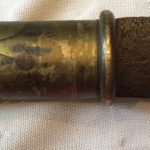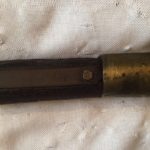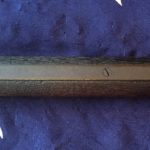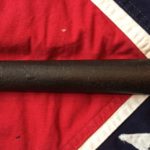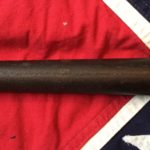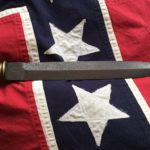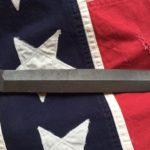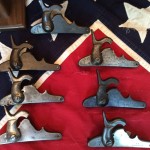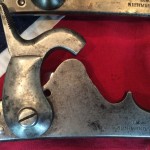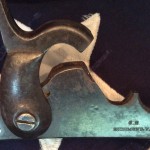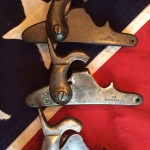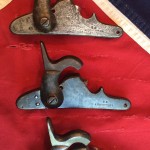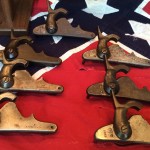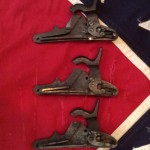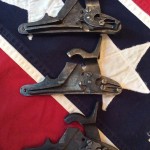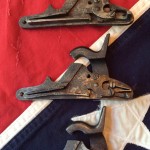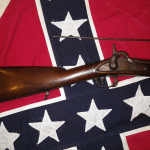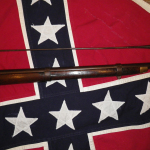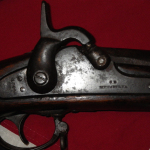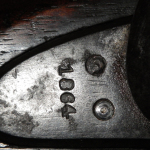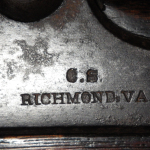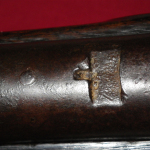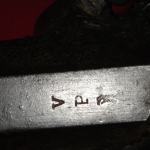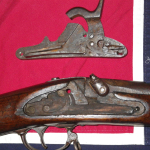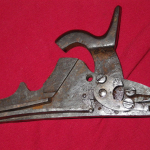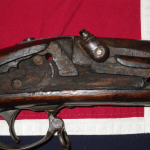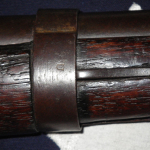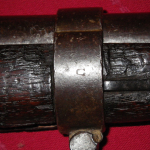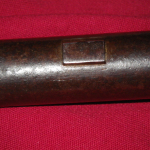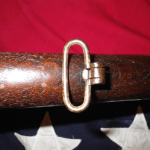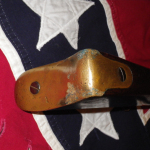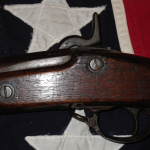- Richmond Style, Confederate Pike
- Richmond Style Pike, Brass Collar & Copper Rivet
- Confederate Pike, Brass Collar With Casting Flaws
- Richmond Style Pike, Collar, Metal Straps, & Copper Rivets
- Richmond Style Pike, Metal Straps & Securing Screws
- Confederate Richmond Style Pike, Cast Iron Base Plate
- Confederate Richmond Pike, Base Plate
- Richmond Style Pike, Spear Point Blade
- Confederate Richmond Pike, Spear Point
Let every army have a large reserve, armed with a good pike, and a long heavy side knife, to be brought upon the field, with a shout for victory, when the contending forced are much exhausted, or when the time comes for the charge of bayonets. When the advancing columns come within reach of the balls, let them move in double quick time and rush with terrible impetuosity into the lines of the enemy. Hand to hand, the pike has vastly the advantage of the bayonet, and those having the bayonet, which is itself but a crooked pike, with shorter staff, must retreat before it. When the retreat commences, let the pursuit be rapid, and if the enemy throw down their guns and are likely to outrun us, if need be, throw down the pike and keep close at their heels with the knife, till each man has hewed down, at least, one of his adversaries.
Governor Brown gave this decree to all good people of Georgia but he was also broadcasting to other States of the Confederacy as well as other armies in the South.
So that brings me to my newest Confederate Pike, thought to be made in Richmond Virginia hence its name “Richmond Pike”. This pike is in very good condition with no cracks or missing parts. The blade has some pitting which just adds to its beauty.
Overall length is 98 ½”, with the spear point blade measuring 12 ½” long, and the iron collar at the base of the pike “ which is generally missing on most examples” measures 7”. The brass collar at the base of the blade measures 2” and is held in place a what appears to be a copper rivet.
The two metal straps that hold the blade in place run down the length of the pike beneath the brass collar and measure 17”. One strap is held in place with two copper rivets and 4 metal screws and the other strap is held in place with one copper rivet and 5 metal screws.
All in all this is a fine example of a Confederate Pike in great condition. If you have any questions about this weapon or any of the other weapons in my Arsenal feel free to contact me at civilwararsenal@yahoo.com attn, Gene West. Thanks for stopping by and enjoy the history.

